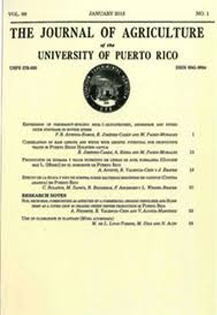Abstract
Soil temperature measurements from a Soil Climate Analysis Network (SCAN) monitoring site in the Ozark Highlands Major Land Resource Area (MLRA 116A) were evaluated on landscapes comprising Typic Fragiudults (Scholten series) and Typic Paleudults (Poynor series). The five soil forming factors were similar for both soils, with the major difference between the adjacent soils being a fragipan in the Scholten series. Air and soil temperatures were collected from a weather station of the USDA-Natural Resources Conservation Service near the border of the mesic soil temperature regime and udic soil moisture regime zone. The mean annual soil temperature observed in the Scholten soil (13.5° C) was 0.5° C cooler than the mean annual soil temperature in the Poynor soil (14.0° C). This study showed little difference in mean soil temperatures between soil types from January to April and from August to December. During the months of May, June and July, the Poynor mean soil temperature was higher (by 1.1° C, 1.4° C and 1.2° C, respectively) than the Scholten mean soil temperature. According to this study, it is possible that the mean annual soil temperature of fragipan soils is cooler than adjacent soils with no fragipan properties. The greatest differences between mean soil temperature and mean air temperature were observed during the months of November (5.1° C for Scholten soil and 5.3° C for Poynor soil); December (5.0° C for Scholten soil and 4.9° C for Poynor soil); and January (4.5° C for Scholten soil and 4.4° C for Poynor soil). The smallest difference was during the month of March (0° C for Scholten soil and 0.3° C for Poynor soil). This study also indicated that the mean annual soil temperature in the Ozark Highlands can vary by soil series depending on soil properties affecting heat transfer within pedons.

